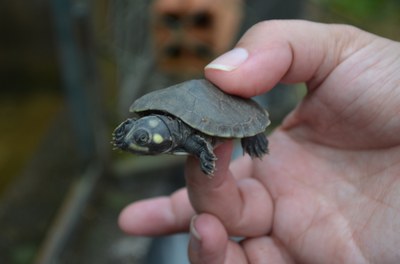Amazon River Turtles release helps conservation in the Rio Trombetas Biological Reserve
The 2018 Amazon River Turtle release season in Rio Trombetas Biological Reserve(Rebio), Pará state, ended with the release of 5,050 animals. Local communities, professionals, and partners of the Trombetas River Chelonians Project (PQT), the Chico Mendes Institute for Biodiversity Conservation (ICMBio) and the Brazilian Institute for Ecological Research (IPÊ) participated. Over the year, 27,862 Amazon River turtles were released in the area thanks to the efforts of 27 families who live in the Rebio and work as biodiversity monitors in this conservation unit.
ICMBio has monitored and protected Chelonians in the region for almost 40 years, working towards a better chance of survival. Since 2003, the project has used educational activities and social participation to unite the conservation unit management team and the local community, which has strong cultural ties to the Chelonians.
For generations, riverine communities in the Trombetas River area have co-existed with the Amazon River Turtles, and the custom of eating the turtles was very common. However, now the species are facing extinction due to poaching activity of both eggs and turtles.
The Rebio, encompassing over 4,000 square kilometers with the largest registry of Chelonion females in the biome, was created in 1979 to ensure the protection of this species of turtle. However, according to ICMBio data, the population of offspring diminished from 600,000 to 30,000, says Carolina Marcondes Moura, PQT Coordinator.
“This area once had the biggest concentration of Amazon River Turtles. Around 5,000 to 8,000 females had laid eggs at the end of 1970. The monitoring started with the creation of the Rebio and the Saracá-taquera National Forest, established after the mining company Mineração Rio do Norte (MRN) started to explore bauxite in the region.” Moura explains.
In 2017, together with ICMBio, IPÊ became a partner of the initiative through the Participatory Biodiversity Monitoring Project, now present in over 16 conservation units in the Amazon. It facilitates capacity building and community mobilization on the conservation of flora and fauna in the biome. With the PQT, IPÊ works to enable and promote courses and capacity building seeking to improve and facilitate the turtle monitoring by the families. As in other conservation units, biodiversity checks are done by the local community, following a protocol established by ICMBio so that the data can be utilized efficiently, aiming at conservation.


